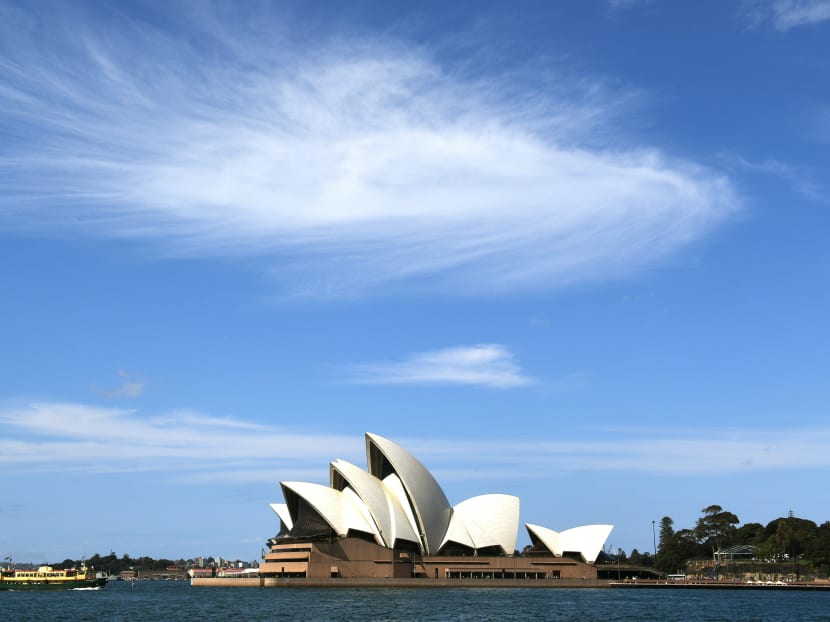Australian climate report predicts hotter days, harsher fire seasons
SYDNEY — Australia will have more extremely hot days and a longer and fiercer fire season, and parts of the continent will spend more time in drought as rainfall decreases, according to a report by top government scientists released on Thursday (Oct 27).
SYDNEY — Australia will have more extremely hot days and a longer and fiercer fire season, and parts of the continent will spend more time in drought as rainfall decreases, according to a report by top government scientists released on Thursday (Oct 27).
The surface temperature has increased about 1°C since 1910, the report said, and rainfall through the growing season for winter crops has dropped almost 20 per cent in some regions.
Sea levels are also rising as ocean temperatures warm, leading to higher chances of inundation and coastal flooding. Oceans absorb large amounts of the world’s excess heat.
Extreme weather events are increasingly common, said Dr Steve Rintoul, interim director of Australia’s climate science centre at the Commonwealth Scientific and Industrial Research Organisation (Csiro) and an author of the report. And that trend will continue.
"Although a 1°C-rise in air temperatures seems small, it is enough to shift baseline averages," Dr Rintoul said, referring to an increase equal to 1.8°F.
He added: "It increases the odds those events will happen."
The biennial report, by scientists at Csiro and the Australian Bureau of Meteorology, draws on data collected at Cape Grim, Tasmania, where greenhouse gases caught in the atmosphere are measured, and from a programme called Argo that tracks temperatures and other conditions in the world’s oceans.
Australia is viewed as a leading example of a developed country being hit hard by climate change, and the report hints at the complex effects the rest of the world may face as climate change alters weather patterns.
"The whole globe is subject to change," said Dr Karl Braganza, of the Bureau of Meteorology, another author of the report.
"It is sobering to look at other countries, countries like Bangladesh, or African nations, where their ability to deal with drought is much more reduced than ours."
Up to 75 per cent of ocean warming occurred in the Southern Hemisphere, the report said. As oceans absorb carbon dioxide and water temperatures increase, they expand, contributing to a rise in sea levels.
Warmer oceans have also prompted a shift in large-scale weather patterns, which in turn affects rainfall. Although precipitation across Australia varies year to year, Csiro said the recent drying out of southern Australia was the strongest recorded large-scale change in rainfall since national records began in 1900. Years with lower-than-average growing-season rain would be more frequent in some regions, the report said.
Rainfall in the south-west reached such lows that Perth, the capital of Western Australia, mostly relied on water from desalination plants, Dr Rintoul said.
Long-term averages have declined 19 per cent since 1970, but that has accelerated to 25 per cent since 1996. Perth, an isolated city on the far western coast, has a population of about two million.
Water that flows through streams and rivers also declined sharply. In the food-growing Murray-Darling Basin, in southern New South Wales and Victoria, stream flows were 41 per cent lower than average, and in some parts of Victoria, they declined more than 70 per cent.
The report also said that since 1993, sea levels to the north, west and south-east of Australia surpassed the global average. Ocean warming contributed to about a third of that rise, of about 20cm, since the late 1800s. The remainder was attributed to melting sea ice and changes to water stored on land.
The scientists, who said carbon dioxide emissions were largely because of the burning of fossil fuels like coal, refrained from urging the government to increase its commitment to lowering pollution targets. Australia has yet to ratify the Paris accord on climate change.
In August last year, Australia agreed to an emissions cut of between 26 and 28 per cent from 2005 levels by 2030. But state authorities have pushed ahead with plans for an immense coal mine in Queensland, inland from the Great Barrier Reef. THE NEW YORK TIMES







